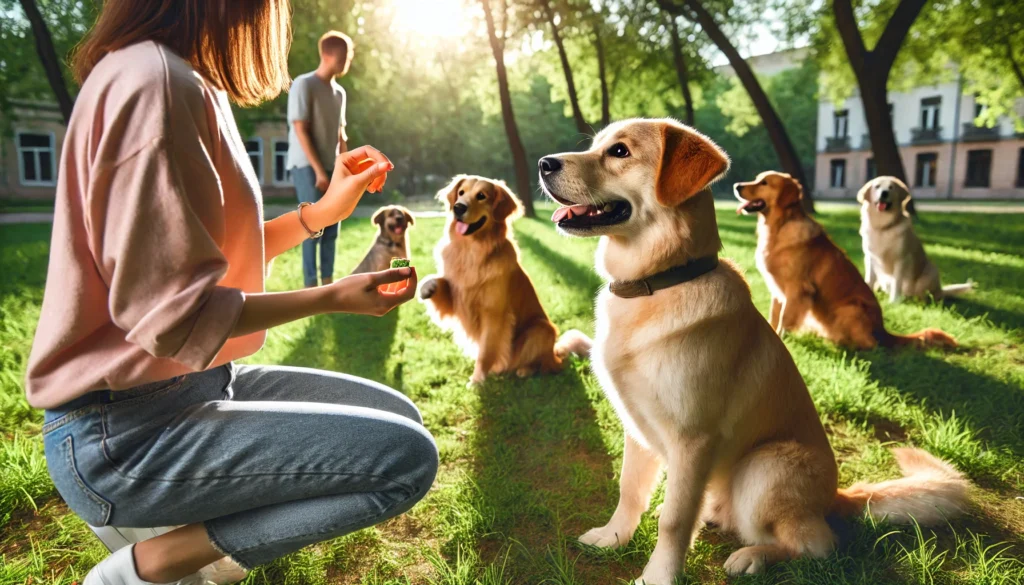Taking a dog home is one of the most rewarding experiences you can have. However, with great rewards come great responsibilities. A well-socialized and well-trained dog is not only a pleasure to be around, but is also safer and healthier.
In this comprehensive guide, we'll explore the best practices for dog socialization and basic training, giving you all the tools you need to ensure your four-legged companion becomes a valued and loved member of your family.
The Importance of Socialization
Socialization is crucial to a dog's emotional and behavioral development. From a young age, it is important that the dog is exposed to different people, environments, sounds and other animals. This helps prevent future problematic behaviors and anxieties.
A well-socialized dog is more confident and less likely to display aggressive or fearful behavior.
First Steps in Socialization
Begin socialization as early as possible, preferably during the critical period of 3 to 14 weeks of age. Introduce your puppy to new experiences gradually, ensuring each interaction is positive.
Take him to different environments, such as parks, busy streets and pet-friendly stores. Allow him to meet people of all ages and other animals in a controlled and supervised way.
Continuity in Socialization
Socialization should not stop after puppyhood. Continue exposing your dog to new situations throughout his life. Taking obedience classes, going to dog parks and arranging playdates with other dogs are great ways to keep your dog socialized.
Consistency is key to ensuring it remains well-fitting and comfortable in different environments.
Fundamentals of Basic Training
Basic training is essential to establishing good communication between you and your dog. Commands like “sit”, “stay”, “come” and “down” are not just tricks, but important tools to ensure your dog's safety and well-being.

“Sit” command
The “sit” command is one of the first that many tutors teach. It helps control the dog in various situations, such as before crossing the street or during feeding. To teach this command, hold a treat near your dog's nose and slowly move it upward.
When he follows the treat with his eyes, his bottom will naturally touch the floor. At that moment, say “sit” and offer the treat as a reward.
“Stay” command
The “stay” command is vital for situations where you need your dog to stay in one place. Start with the dog in a “sit” position. Say “stay” and take a step back. If he stays in place, go back and reward him. Gradually increase the distance and duration before rewarding him.
“Come” command
Teaching your dog to come when called can prevent dangerous situations. Use a happy tone of voice and rewards to encourage him. Start in a distraction-free environment and slowly add more distractions as he becomes more confident in command.
“Lay down” command
To teach the “down” command, start with the dog in a “sit” position. Hold a treat and slowly move it toward the floor between his front paws. When he lies down, say “lay down” and offer the treat.
Tips for Effective Training
Effective training requires patience, consistency and positivity. Use rewards such as treats, toys and praise to reinforce the desired behavior.
Avoid punishments as they can cause fear and aggression. Train in short sessions, 5 to 10 minutes, several times a day. This keeps the dog engaged and prevents frustration.
Common Training Challenges
During training, it is common to face some challenges. Distraction is one of the biggest obstacles. Train in environments with few distractions and gradually increase the difficulty level. Another challenge is consistency. Make sure everyone in the house uses the same commands and training methods to avoid confusion.
Technology and Training
Nowadays, technology can be a valuable ally in dog training. There are several apps and devices that can help. For example, training apps offer tutorials and tips, while tracking devices can monitor your dog's activity, helping to ensure your dog is getting enough exercise.
Useful Apps for Socialization and Training
Some apps can be particularly useful in the socialization and training process.
The “Puppr” app offers step-by-step training lessons, while “Dogo” allows you to record training progress and receive feedback from professional trainers. “GoodPup” offers virtual training sessions with certified trainers.
The Importance of Socialization and Training for Wellbeing
Socialization and basic training are fundamental pillars for the well-being of dogs. They not only ensure that the dog behaves appropriately in various situations, but they also promote a stronger bond between the dog and owner.
Well-trained and socialized dogs are happier, healthier and live in harmony with their family and community.

FAQs
- How to introduce a new dog at home with other pets? Introduce them gradually, in a neutral environment. Supervise all encounters and reward calm, friendly behavior.
- What is the ideal age to start training? Training can begin at 8 weeks of age. Puppies are more receptive to new learning at this stage.
- What if my dog is afraid of socializing? Start slowly and use positive reinforcement. Gradually expose him to new experiences, always associating them with rewards.
- What is the ideal frequency for training sessions? Short sessions of 5 to 10 minutes, 2 to 3 times a day, are ideal. This keeps the dog engaged without overwhelming him.
- Can I train my dog alone or do I need a trainer? You can start alone, but a professional trainer can be very helpful, especially when solving specific problems.
- How to deal with aggressive behavior during socialization? Stop the interaction immediately and redirect the dog's attention to something positive. Consider getting help from a professional trainer to deal with aggression.
Conclusion
Socialization and basic training are essential to raising a balanced, secure, and happy dog. Using positive methods, consistency and patience, any owner can help their dog develop good manners and become a beloved member of the family.
Technology can be a great ally in this process, offering additional support and valuable resources.
